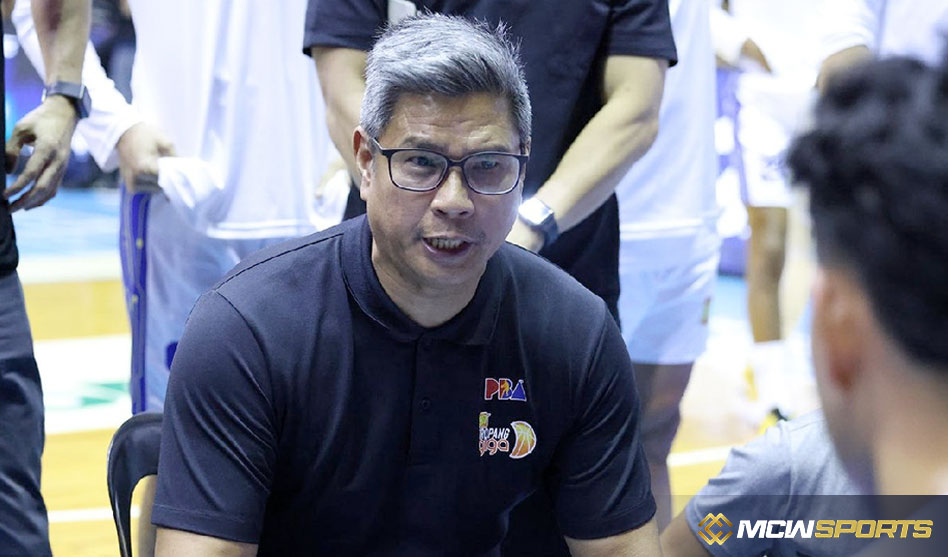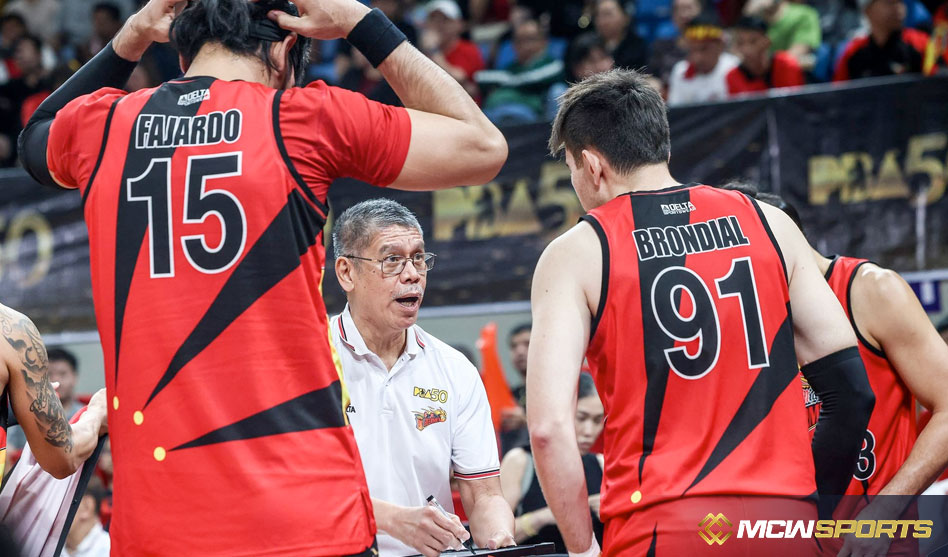Having lived in Cambodia from 2007-2020, I was eager to be back to watch the 32nd edition of the SEA Games, which Cambodia would host for the very first time. The games started over six decades ago and countries take turns to host the biennial sports fest; the Philippines first joined in 1977 and hosted in 1981, 1991, 2005 and 2019.
As an avid follower and spectator, these regional games are third in stature to the Olympics and the Asian Games, and whenever possible, I try to travel to the Games: Manila in 1991, Chiang Mai in 1995, and Singapore in 2015 were the ones I managed to watch. My love for watching sports was inherited from my dad, who used to coach basketball and athletics, with a side job in the ’60s as a basketball referee.
I was keen on watching track and field; I memorized names and records for men and women in track and field at the National, Asian, and World levels when I was in the third grade. No way would I miss the games in Cambodia, which have been in the national consciousness for a decade.
The triumph of finally hosting the Games
Cambodia was first selected to host the 1963 games, then known as the SEAP (South East Asian Peninsular Games). King Sihanouk ordered a massive stadium and athletics/football field built in the heart of Phnom Penh; this was masterfully designed by Vann Molyvann. Unfortunately, due to political instability, Cambodia never got to host. Then the civil war came, a war in neighboring Vietnam spilled over the border, the Khmer Rouge, followed by a 10-year occupation by the Vietnamese and an international embargo. Between 1971-1979 almost a quarter of the population died and were displaced in refugee camps.
But after the 1991 Paris Peace agreements, the UN administered the country for two years, and elections were held. A simmering conflict and series of coups continued for several more years, but there has been stability over the past two and a half decades. Cambodia resumed its participation in the Games in the mid-’90s. In 2013, the 2023 games were awarded to the country, giving them a decade to prepare. And prepare they did. Infrastructure apart, mascot designs, logos, and other branding and marketing strategies were developed. The slogan “Sports: Live in Peace” was adapted.
Impressive, ‘pang-Olympics’ venues
Massive infrastructure-building for a new sports complex, the Morodok Techo National Stadium some 12 kms on the outskirts of Phnom Penh, was started in 2014, with major support from the Chinese (who also financed the hosting of the SEA Games by Laos in 2009). One is struck with awe by the massive structures. There is the centerpiece – a 60,000-seater state-of-the-art track stadium, which was said to have cost $160 million. It has two gigantic pylons at opposite ends, each of which rises 99 meters. Facilities, gigantic LCD screens, and seats are first-rate. There are huge parking areas, a practice track under the stands, and fountains surrounding the structure. A Philippine athletics coach gave the ultimate accolade: “pang-Olympics ito.”
Then there is the aquatics center, with three pools – a 50-meter one for competition, a 25-meter pool for warm-ups, and another one for diving competitions; its rooftop resembles the design of a traditional Khmer longboat. There is also the Elephant Hall, which houses twin stadia for the martial arts competitions and for basketball.
An athlete’s village consisting of four skyscrapers and several lower rise apartment units accommodated 3,500; a weights gym, a hockey field, eight tennis courts connected by elevated walkways, and multi-purpose stadiums for badminton and table tennis were the other buildings constructed. There was also a full 400-meter oval for track practice. The whole sprawl covers close to 94 hectares, part of which was reclaimed from a lake. There are also huge open spaces, where stalls and booths can be put up.
One drawback is that the distances between the stadia can be several hundred meters and there are no shaded pathways between the venues. The massiveness and use of pools and fountains has echoes of that great Khmer temple city, Angkor Wat. Some venues were inevitably rushed to be completed for the Games, and some of the cracks were showing, but overall, considering the scope, multiple venues, and massive effort needed to hold the games, these were minor glitches.
The other major venues are the older stadium, swimming pool, and athletics/football field constructed in the ’60s, collectively known as “Olympic Stadium,” where volleyball, football, water polo, sepak takraw, chinlone, boulles, petanque, soft tennis, and weightlifting were held; a new covered marquee in the area, the size of a football field, was used for gymnastics (artistic and aerobic) and for dance sport.
At the newly completed International Convention Center, several plush and carpeted halls were temporarily converted into arenas for boxing, jiu-jitsu, arnis, karate, fencing, taekwondo, and vovinam. E-sports, chess, sailing, beach volleyball, golf, duathlon, marathon, obstacle races, and other sports were held in other venues.
Never shy of using police escorts and sirens at the drop of a hat, commuter buses for athletes, officials, and volunteers, as well as cars of various officials were inevitably allowed to skirt around traffic with their ubiquitous “wang-wangs,” and nobody raised an eyebrow. This was no doubt the most prestigious, and the largest, event the country has ever hosted in its contemporary history.
What to watch?
Multiple venues and conflicting schedules meant having to choose where to go for the day, and there was a full schedule from May 6 to 16. I am a fan of athletics, volleyball, swimming, and tennis, so those were high on my list.
Of course I wanted to see the handful of world- and Olympic-class Pinoy athletes (e.g. world gymnastics champ Carlos Yulo and pole vaulter EJ Obiena; I would have lined up for Hidilyn Diaz had she not skipped the Games to prepare for the Olympics). I managed to see both of them in action. Caloy easily won the all-around competition over three other Vietnamese; the deeper Vietnamese bench allowed them to win the team title. EJ cleared 5.65 meters, breaking his old SEA Games record of 5.45, with the second placer clearing 5.20 meters. And this was done in rainy and wet conditions. Seeing Eric Cray, our six-time gold winner for the 400 meter hurdles, was also a thrill.
I caught badminton and table tennis at the Morodok Techo – keeping an eye out for world beaters like Indonesia, Malaysia, and Thailand.
The Thai women’s volleyball team, one of the top 10 in the world, was also a priority. They dumped the Philippine women’s volleyball team – we haven’t won a set over Thailand in a SEA Games competition for over 20 years, with Thailand winning the gold since 1995. The Pinays again lost to Vietnam and Indonesia, a routine unbroken since 2007.
Sepak takraw, chinlone, and its variant hoop takraw were beautiful to watch, merging acrobatics, speed, and precision – an aerial ballet of sorts and a fantastic photography opportunity. Aerobic gymnastics mimicked the artistic gymnastics moves on the traditional apparatus, but was set to Zumba-like music and could be performed by pairs, trios, and groups of five.
Break-dancing was introduced as a sporting event for the first time, and also will be in the Paris Olympics in 2024. At this sport, all the judges themselves, males from seven different countries, were all break dancers too and showed off their moves. The Slovakian emcee energized the enthusiastic crowd with rap and banter that made it seem like a concert! This was an amazing piece of contemporary musical and dance culture that has been globalized to a great degree; yet for me, as a doctor, the moves seemed scary and I worried about dislocations, torn ligaments, and injuries.
I was also keen on watching sports that I had not witnessed in competition before – such as gymnastics, diving, and sepak takraw. In the crowd would be fellow Pinoys in Cambodia, tourists watching the games, and parents of athletes. I was able to meet the parents of 19-year-old gymnast Migs Besana, and they jumped for joy when he won a gold in the vault. It was also heartening to watch the medal awarding ceremonies. The playing of the national anthem and raising of the flag of the gold medal winners gave a sense of pride. I had brought along a Philippine flag and waved it from the stands whenever the country was competing.
All sports events were open to the public, and tickets were required for only two sports: football and volleyball, and these were all snapped up in a matter of days. One section of the volleyball stadium was reserved for tourists like myself, who were accommodated even without tickets. Security was tight, with x-ray scanners; power banks, umbrellas, and water bottles were not allowed during the first few days. The hundreds of youth volunteers, most of whom were university students, in their violet and khaki uniforms were a great help to visitors.
The (padded) medals race
A big deal at the end of every day is the medals table. I was expecting the host country to do fairly well (all host countries try to win as many gold medals as possible legally) but I definitely did not expect Cambodia to lead the count in the first five days of competition. In previous SEA Games, Cambodia was usually at the bottom third of the table, ranking between 8th to 10th — the bottom dweller being Timor Leste, which only joined the competitions very recently. (The Timorese beat the Philippines in men’s football, though, which is a new low for the country.)
Usually in the top three, at least for the past five editions, were Thailand, Vietnam, and Indonesia; in the middle would be the Philippines, Malaysia, and Singapore, while the lower third would include Cambodia, Myanmar, Brunei, Laos, and Timor Leste. Countries in the middle half may eventually make it to the top, when they are the hosts of the games, as what happened when the Philippines hosted in 2019, 1991, and 2005. By the end of week one, Vietnam and Thailand were already leading, but Cambodia was still in the top three, in terms of gold medals won, with Philippines at seventh.
The SEA Games are unique in that new sports can be introduced by the hosting country. Some of these indigenous sports are rarely well known outside the country but are a source of gold medals. Or, some sports may even not be included in the calendar, for various reasons. One thing I noticed from the events calendar was the huge number of medals for sports related to the martial arts — some 211 golds in total from arnis, vovinam, karate, judo, jiu-jitsu, wushu, taekwondo, kun khmer, kun bokator, kick boxing, and pencak sila – almost a third of the total 585 gold medals. A whopping 800+ medals were awarded in these sports alone. I’m not a martial arts fan, so I can’t even tell some of these sports apart!
But this is the nature of the medals race. The rankings are based on the number of gold medals won. In 2019, the Philippines hosted and finished on top of the medal race, with 149 gold, 117 silver, and 119 bronze, totaling 385 out of the 1,623 awarded. Cambodia then won 46 medals, with a mere four golds, placing eighth. This year, with Cambodia hosting, a total of 2,041 medals were awarded. The Philippines had 58 gold, 85 silver, and 117 bronze, for a total of 280, good for fifth place and called as “one of the country’s best performances.” Cambodia, in contrast, had a massive haul with 81 gold, 74 silver, and 127 bronze, and placed fourth overall, after Vietnam (136 gold), Thailand (108), and Indonesia (87).
Cambodia’s placement as fourth was not unexpected. Weeks before the Games began, the Philippine Gymnastic Association had protested a rule introduced by the Cambodian Gymnastics Federation of limiting the number of golds that could be won by an individual in gymnastics to two, stating that this move “was designed to put Cambodia in fourth place overall.” (Obviously, the target here was the Philippines with Carlos Yulo; women’s gymnastics was not included this year, where the Philippines was defending champion and had sure medalists).
Host countries also have the advantage of a supportive crowd, as well as lesser costs for transporting athletes and officials to the Games, and may include more than one competitor in an event, thus boosting their medal chances overall.
The level of team effort required, the number of players in a team, or even the duration of an event is not really a consideration. For example, a three-hour volleyball match with 12 players counts as one gold. The 50-meter freestyle race, lasting less than half a minute, is also one gold. In some disciplines there is no playoff for the bronze medals, so the number of bronze medals awarded is always more than the gold and silver medals.
Politics, controversy, and sports do mix
Many observers noted the grand opening show, which was dazzling, but obviously also crafted to highlight the achievements of the long-serving Prime minister Hun Sen, who has been in power since the early 1980s. With elections in Cambodia looming in July, with no credible opposition, it is a foregone conclusion that he will have another term; the sports extravaganza was just one more point in the ruling party’s favor.
There were several controversies in judging winners, awarding medals, restricting participation, and the number of gold medals to be won in some sports, flouting eligibility criteria and providing naturalization papers. This is not unique to Cambodia or to sport competitions in general. Men’s basketball, considered as “Philippine territory,” suffered a shock when we lost to Cambodia in the opening game, with a slippery linoleum floor and Cambodia fielding a set of naturalized players. One might argue that the Philippine team offered too many excuses. However, some measure of pride was regained when we won over Cambodia in the finals. Losing the basketball gold would mean the equivalent of something like Cambodia losing in kun khmer, Vietnam in vovinam, or Indonesia in sepak takraw.
A few days before the Games began, Cambodia announced that the food and accommodations of the athletes and officials would be provided free of charge; normally the sending countries shouldered these costs. This was a welcome development, and an act unlikely to followed in subsequent games.
So will I continue to watch this regional sports competition that’s also a festival? Maybe once a decade should be fine, looking out for teams and athletes who are a notch above the rest in the region, and who could be Asian Games medalists, or better, potential Olympic and world champs. There will be a few of this level in SEA, and it would be worth catching if one cannot go for the Olympics. One should disregard all the posturing and take the medals count with more than a grain of salt.
And I predict that the Philippines will once more top the medals table in 2033 when it next hosts the Games. As one of my journalist friends in Cambodia said, “Ah, but that is the ASEAN way.” – Rappler.com

 English
English


![[Ilonggo Notes] The 2023 SEA Games in Cambodia: My view from the grandstand](https://ph.mcwsports.com/wp-content/uploads/2023/05/gilas-pilipinas-may-16-2023-kAhKHD.jpeg)







